Raptor Flight impressive on, or off, firm ground
Filed under: Weekly test drives, Autos
By John Gilbert
It’s a special time of the year when late September rolls into Duluth, Minnesota, because tourists, visitors and all manner of folks drive up on the mini-mountain above the East End and follow the gravel road about a mile to its peak, which is called Hawk Ridge. It is there, when the weather and wind is right, that thousands of migrating hawks of all species fly along that ridge in breathtaking numbers.
The phenomenon is that all of the hawks and other raptors are smart enough to not want to be caught over Lake Superior, so they fly to the Westernmost tip of the big lake, then they turn south and migrate to warmer areas, sometimes as far as the Gulf of Mexico. From mid-August until the end of November, the hawks start out with the smallest accipiters and gain in size to the biggest red tails and eagles. The DNR and Audubon Society are stationed there, and have a banding station, while hundreds of spectators bring their binoculars, cameras and folding chairs to view exhibits and gaze out over the blue water, hoping to spot a big raptor.
It is also the perfect time of year to road-test a Ford Raptor — the biggest bird in the species of Ford F150 pickup trucks. The F150 remains the top-selling vehicle in the country, while the Ram is making an unprecedented bid to catch up, and the new General Motors twins of Chevy Silverado and GMC Sierra try to rebound, with new competition from Toyota and Honda.
But hot as that competition is, if one big pickup can fly up as the most capable, it would have to be the Ford Raptor.
New Corolla Adds Hybrid, Global Platform
Filed under: Weekly test drives, Autos

Toyota Corolla may have become “green” with Hybrid model, but the blue of 2020 Corolla Hybrid blends with Lake Superior blue.
By John Gilbert
We get hardened to criticism of certain cars by the public, or media, until it almost becomes traditional. Toyota, which sells enormous quantities of all manner of cars and trucks all around the world, might be the biggest victim, because critics became cynics in declaring cars like the Camry and Corolla as dull, boring “appliances,” rather than fun and enjoyable cars.
I understand the criticism, and even engaged in some of it, because once it had reached a certain point of consistency, Toyota seemed more interested in maintaining the status quo than striving for a higher plateau. More recently, I didn’t anticipate that the Prius, Toyota’s standard-bearer of hybrid vehicles, had come under similar criticism, because while I never thought of the Prius as boring, I also gave it room because it was always pushing the barriers of gasoline-electric powertrains. I learned of the cynicism while driving a beautiful dark blue 3030 Toyota Corolla, and we parked at an available parking space in West Duluth. We locked the Corolla with the key fob, and saw a fellow we know, and who knew I evaluated new cars. He nodded toward the Corolla and said, “If that your new test drive?”
I said yes, it was, and added that it was a 2020 Corolla, which is, shall we say, cautiously restyled, and that this particular one was a Hybrid.
“A Hybrid?” he responded, with obvious surprise.
I explained that for 2020 Toyota’s revamped Corolla compact line has a new global platform and a new body with stylish contours carved in. Corollas always have tried to look stylish-on-a-budget, but they haven’t been hybrids. And they haven’t been adorned with this impressive new “Blueprint” exterior paint.
“This one,” I said, “has the same drivetrain as the Prius I had reported on a month or so earlier.”
“Well then,” he shot back, “why would anyone buy a Prius?:”
Apparently, the masses might consider the Prius commonplace, even dull and uninteresting. Particularly if they haven’t driven a new one recently, such as the quick and impressive all-wheel-drive Prius from my recent Newcarpicks.com review. I have driven the various Prius models all the way through their existence, and I can appreciate the evolutionary changes to more efficient methods of linking the electric motors to the gasoline engine, which recharges the electric motors as they drive the car.
My acquaintance wouldn’t let up. “If it’s the same drivetrain, then why would you buy the Prius?” he asked. “The Corolla is much more car.”
There you have it. The masses may not be influenced by the latest improvements in technology, but they know what they like. I like the new Prius, particularly the all-wheel-drive model with its new edgy shape and 50-plus miles per gallon.
However, I also had to go back to my notes for comparison sake. The Prius, fixed with its instruments on the center of the dashboard, and its hatchback design, cost a base price of $28,810, and the AWD model I drove was $32,508. Well, I figured, technology costs money, ao that’s not so bad.
Stelvio Is the SUV That Thinks It’s a Race Car
Filed under: Weekly test drives, Autos
By John Gilbert
Discussing driving characteristics of new cars is the major part of any car review. Then along comes the Alfa Romeo Stelvio Quadrifoglio, and reasonable discussion goes right out the window.
Alfa Romeo always deserves a gold star for building cars that capture your senses, in ways that can be flat-out fun, even without going flat-out, literally. When Alfa Romeo decided to re-enter the U.S. market a few years ago, its designers set out to build a fantastic flagship sedan, and it was the Giulia. I’ve driven it both in rear-wheel drive and in all-wheel drive, and with both the 2.0-liter 4-cylinder and the 2.9-liter V6. As I wrote at the time, it is the best-handling sedan I’ve ever driven.
Shortly after the Giulia’s introduction, Alfa Romeo decided that to be fully competitive, it also needed an SUV, and we can all thank the powers that be that Alfa decided to take a shortcut, basically building an SUV body atop the Giulia sedan platform and drivetrain.
Spending a week with a 2019 Alfa Romeo Stelvio Quadrifoglio, identifiable as the top model by the neat little white cloverleaf on either side of the body, went beyond fun. That cloverleaf stands out especially on the accompanying paint job, which is “Rosso Competizione Tri-Coat.” In the best interests of Italian car-painting passion, I think it means red, or more accurately competition red.
What sets the Stelvio Quadrifoglio test vehicle above the normal Stelvio is that it has all-wheel drive, and it s powered by the optional upgrade to the 2.9-liter V6. The story of that engine is worth retelling. When Fiat bought out Chrysler, forming FCA for Fiat Chrysler Automobiles, we learned a lot about the size and scope of Fiat, which owns Ferrari, Alfa Romeo, and Lancia, along with Chrysler, Dodge, Ram and Jeep. Sergio Marchionne, who was chief executive of Fiat, FCA and all the affiliates, was the one who guided the Giulia through to completion.
Once it was finished, a beautiful sedan from every angle, he called upon the Formula 1 racing engineers from Ferrari and gave them the assignment of designing from the ground up a new and high-tech engine that would match the high standards of design and handling the Giulia had already attained. The chief engineer selected certain engineers and they hand-built the engines for the Giulia.
When the Stelvio came along, sharing the distinctive styling and the platform of the Giuglia, the very good 2.0-liter 4-cylinder was joined by the Ferrari F1 designed 2.9 liter V6, turbocharged, to deliver 505 horsepower and 443 foot-pounds of torque. From 2.9 liters! That 2.9 turbo engine causes the price of either the Stelvio or Giulia to jump $25,000 – $30,000, putting the Stelvio test vehicle up into the $90,000 range. But then, all things being equal, if you were a car fancier, having your engine built by a Formula 1 race engineer would be worth anything they ask.
How Much is Too Much? GT350 Just Right
Filed under: Weekly test drives, Autos
By John Gilbert
Car-buyers have made a dedicated swing to trucks and SUVs, but there remains a market for cars, and within that segment is a stubborn sub-market for hot cars. High-performance cars. Fun cars.
For a week, I had the chance to live with one — a 2019 Mustang GT350, in “race red,” which is a slightly more subtle name than “arrest-me red,” but the same implied warning accompanies this sleek, fastback descendent of the original Mustang-inspired ponycar craze of the 1960s and ’70s. The shape of all those is roughly the same, whether you preferred the Mustang, Camaro, Challenger, or the old-breed Firebird Trans-Am, Barracuda, or Javelin. All shared a long hood, short rear deck, fast-sloping roofline, and room for two in the front buckets and only those who will put up with the pain of limited legroom in the rear for the thrill of going for a drive.
Driving the Shelby GT350 is thrilling, starting just by starting. Make sure the clutch is in on the 6-speed stick shift, then hit the push-button starter and the crackling roar of the engine gives you a bit of a chil. Rev it and it sounds better, and flip the little toggle switch at the far right of the lower center-stack panel, the one with the little icon of dual exhaust pipes, from normal to “sport,” and the sound changes from light, grey-cloud thunder to dark, almost black, severe-weather thunderclaps of ground-shaking roar.
Having fiddled with various other switches to get to sport — but maybe not race or track-day — you take off, with the acceleration pushing you back into those form-fitting Recaro bucket seats, which encapsulate you in all manner of turns and twists. Those thrills are there, included and waiting for you, in every Shelby GT350. And still, I was able to coax it up from the normal 16-miles-per-gallon in city driving to a peak of 22 mpg on a freeway trip from Duluth to Minneapolis and back to Duluth, including a few slaloms around construction barrels.
The GT350 gets its startling power from a 5.2-liter, dual-overhead-camshaft V8, normally aspirated, with the flat-plane-crankshaft engine turning out 526 horsepower at 7,000 RPMs, and 429 foot-pounds of torque. That is an impressive amount of power, regardless of your intentions, even if you realize you can get a supercharged version of the same engine in the still newer Shelby GT500 — with a ludicrous 750 horsepower and 700 foot-pounds of torque.
As it is, the GT350 takes the sticker price up to $64,860. Such is the cost of precise engineering refinement these days. Almost as much as a loaded pickup truck!
Just like in the Muscle-car days of yore, the “Big Three” are in hot competition. Ford has clearly been influenced by Dodge, which shocked hot-car buyers with a Challenger Hellcat, then upgraded to a Demon, and then a still-hotter Redeye, with a monster supercharged 6.2-liter, 797 horsepower, 707 foot-pound screamer. Chevrolet was scurrying to build a hotter Camaro with the Corvette engine, and now a new mid-engined Corvette, so Dodge kept upping the ante to keep its spot atop the power tests.
Ford, naturally, was not about to concede anything, so it brought out the new Shelby models.
There is a little nostalgia involved, whenever I drive a Mustang Shelby GT350, and my most recent occasion was a gorgeous week in mid-August, where the blue of Lake Superior’s water and the sky rising up from the Wisconsin horizon harmonized, just as the newest GT350 seemed properly frisky for harmonized with the curves of the North Shore Drive.
The nostalgia dates back to the mid-1970s, when my wife, Joan, and I, decided between buying a Shelby Mustang GT350, or a new 1970 Boss 302 Mustang. Tough decision, until I drove a Boss 302 and it won out as a “family car” for our young family. We drove it hard, but not abusively hard. We put a lot of miles on it in a few short years, and I had gotten it repainted into the Dodge hot color of the day, a dark purple called “Plum Crazy.” The Vikings would have loved it.


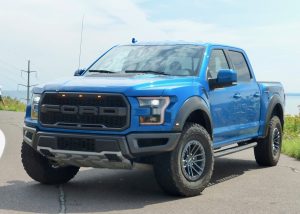
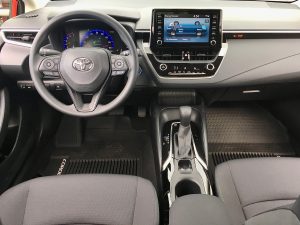
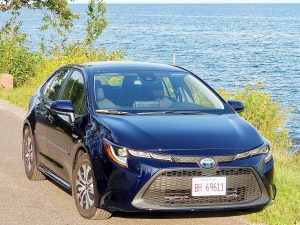


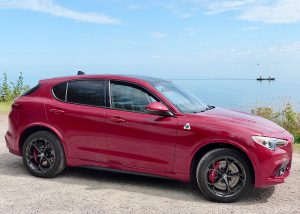
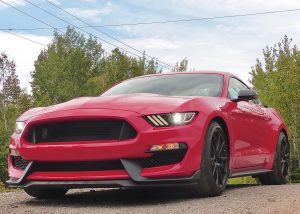
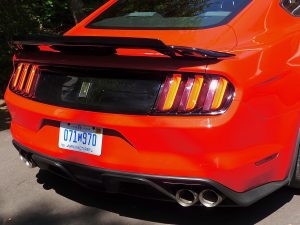
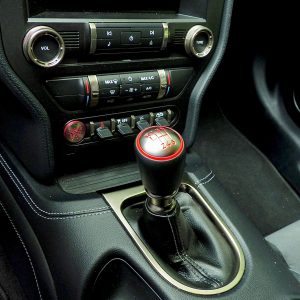
 John Gilbert is a lifetime Minnesotan and career journalist, specializing in cars and sports during and since spending 30 years at the Minneapolis Tribune, now the Star Tribune. More recently, he has continued translating the high-tech world of autos and sharing his passionate insights as a freelance writer/photographer/broadcaster. A member of the prestigious North American Car and Truck of the Year jury since 1993. John can be heard Monday-Friday from 9-11am on 610 KDAL(www.kdal610.com) on the "John Gilbert Show," and writes a column in the Duluth Reader.
John Gilbert is a lifetime Minnesotan and career journalist, specializing in cars and sports during and since spending 30 years at the Minneapolis Tribune, now the Star Tribune. More recently, he has continued translating the high-tech world of autos and sharing his passionate insights as a freelance writer/photographer/broadcaster. A member of the prestigious North American Car and Truck of the Year jury since 1993. John can be heard Monday-Friday from 9-11am on 610 KDAL(www.kdal610.com) on the "John Gilbert Show," and writes a column in the Duluth Reader.